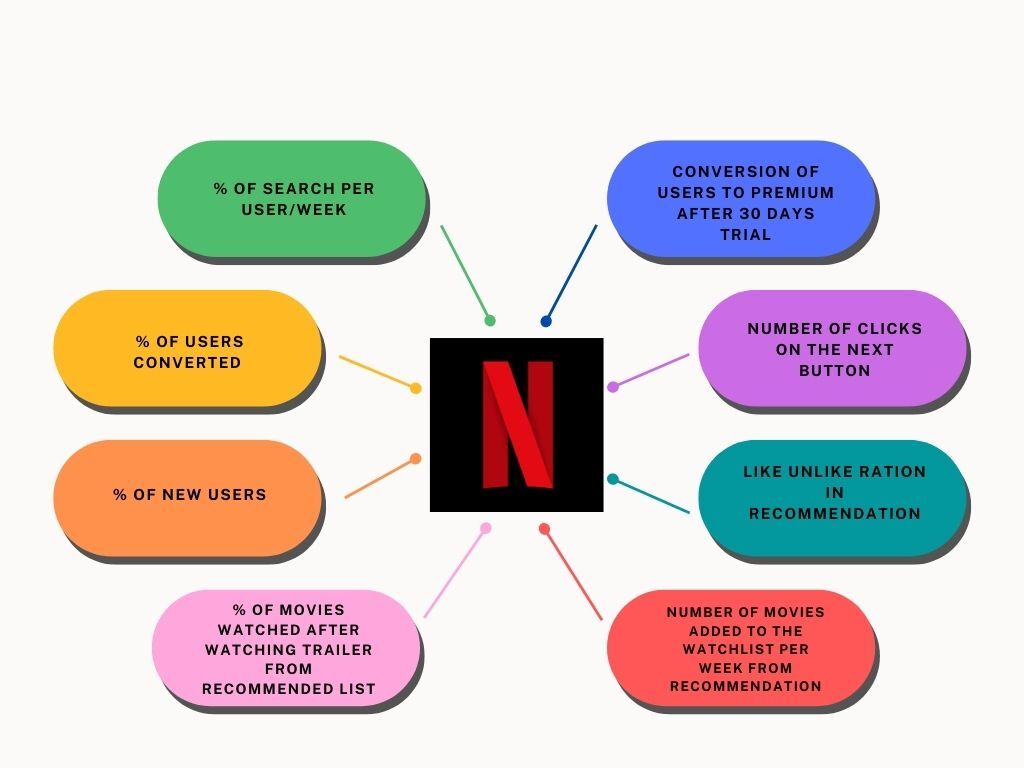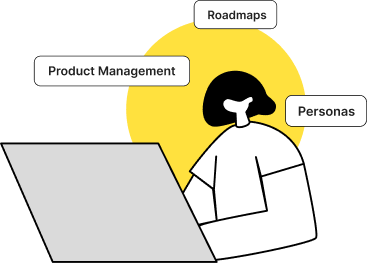Successful Product Managers serve as a product’s most important advocate from the idea stage through its development and eventual release to market. In addition to deploying new features on a regular basis and maintaining balance between the engineering and design teams, top PMs are often on the front lines of innovation; they aim at driving exponential revenue growth through innovative product development. They develop products with high user acceptance and ensure that the product continues to exceed expectations and satisfy its users. Product Managers are constantly dealing with an ever-changing market and an evolving product, so it’s important to remain competitive and adaptable.

Let’s look at the essential skills that one needs to master in order to seize one’s position as a successful Product Manager.
The position of product manager requires a combination of skills for managing cross-functional teams and delivering innovative products. We have categorized them as Product Specific Skills and Soft Skills in this blog.
Let’s begin shall we?
Product Specific Skills
Building Roadmaps
A product roadmap is a tool for conveying the product vision and implementing the product plans to action. It should include the high-level objectives and tasks, the efforts necessary to attain them, and a schedule for completing the work. A product plan entails a lot of work. Customer suggestions, product requests, internal feedback, and development backlogs contribute to the different components. What is included in the roadmap should be closely aligned with the strategy that has already been defined. The decisions are made after thorough study and deliberation by a cross-functional product team, with the product manager guiding the rudder to ensure that any roadmap decisions match the overall strategy. Stakeholders and product development teams depend on product roadmaps for transparency, visualization, and communication outside product management.
It is the PM’s role to create and maintain a live, flexible, and resilient roadmap. They are in charge of gathering research, ideas, and feedback, translating and prioritizing these materials into features, and eventually building the roadmap. They can select which releases and features match the plan and visualize it all on a roadmap. PMs will share the plan and any progress with stakeholders after it is completed. They also choose when and how to construct the best roadmaps for the team.
As the product roadmap is built and customized by PMs, the teams can choose which elements to incorporate and which to eliminate so that the information shown is relevant to whoever is reading it.
A simple roadmap will typically contain feature and product releases, but most will go above and beyond. A product roadmap may include the following items:

There is a wide range of product roadmapping tools available to assist PMs in successfully building their roadmap. Roadmap strategy needs to be chosen first, and then the tool that meets their demands. Here are several roadmapping tools that a PM might utilize based on their needs:
Product Prioritization
How do PMs determine which features to add to their roadmap and arrange their product backlog? How do they choose what to develop next? These are essential questions for every PM to consider. Product Managers must be able to rank the relevance of product features, needs, and tasks. This implies that PMs must understand which features of their products will have the most influence on their consumers or prospective customers. Product Managers who utilize purpose-built product management software like Freshflows are able to handle idea backlogs, planned features, and product roadmaps in one system. It is critical to begin the prioritizing process by analyzing all submissions and requests from customers and other stakeholders. Product Managers who are adept at their craft, take the goal-first approach a step further, using a quantitative prioritization methodology to choose what to concentrate on next and sharing the reasons with others.
Here are some of the prioritization frameworks Product Managers use
| – Kano model – RICE Prioritization – MoSCoW Prioritization – Value Vs Effort – Story Mapping – The Product Tree – Weighted Scoring – Eisenhower Matrix – Opportunity Scoring – Impact Mapping |
Backlog Management
Product backlog management is the most critical aspect of every PM’s job. A product backlog is an integral component of the product development chain; it is a prioritized list of product features that leads from the company’s and product’s vision to a final release. It is a robust tool because it translates a high-level vision into the operational specifics of developing a product. A backlog must be created to address the queries stakeholders may have about the product journey and the strategy to define the future of a roadmap. One of the most important skills as a product manager is to know how to conduct backlog grooming.
Backlog grooming is a regular session in which product managers, product owners, and the rest of the team discuss, review, and prioritize backlog items. Backlog grooming’s primary purpose is to keep the backlog up to date and to guarantee that the backlog items are ready for future sprints. Backlog refinement meetings allow product managers and product owners to discuss the strategic reasons for priority items in the backlog. It is a popular exercise among Scrum and agile product teams.
When utilized together, a tactical backlog and a strategic roadmap may be very successful tools for product development. In the roadmap, PMs put out the strategic intentions for the product, then utilize the backlog to prioritize items required to execute on that roadmap. Managing product backlogs may be a daunting task. It’s critical to keep in mind that each backlog item represents a client’s desire.
There are primarily three kinds of backlogs used to prioritize and deploy features:
| Product backlog: The list of desired features that have not yet been prioritized for release. |
| Release backlog: The list of features that must be implemented for a specific release. |
| Sprint backlog: User stories that must be completed within a specific time frame. |
Items and initiatives that might be included in a product backlog are:

Writing Product Requirement Documents (PRD)
A product requirements document (PRD) carries the specifications of a particular product, such as its purpose, features, functionality, and behavior. It is the core of the product and acts as a live document for every designer, developer, or stakeholder involved in the product’s development, launch, or marketing. The PM creates PRDs to describe what they are doing, who it’s for, and how it helps the end user. Expert PMs not only maintain PRDs up to date, but they also see the PRD process as a continuous one – the document is never actually complete; it merely changes as the team iterates.
The product scope is complex and sometimes unclear until the PM creates the PRD. Creating the PRD encourages the PM to arrange their thinking, answer open questions, reduce uncertainty, and consider use cases that they may not have considered before. The PRD should use a top-down approach, beginning with a broad vision of what needs to be achieved. It should connect product objectives and efforts to the features needed to realize that vision. A well-defined PRD also provides information about how and what the end user will see while interacting with the feature.
A PRD must include the following critical elements:
- Specifications of the product: What are the essential elements in the product development process?
- Goals: What does the team want to accomplish with this product release? How does it relate to the company’s goals?
- Change History: Describe each significant change to the PRD, including who made it, when it was made, and what was altered.
- Message: What is the product messaging that marketing will use to explain this product to both new and current customers?
- Personas: Who are the product’s target personas, and who is the critical persona?
- User Stories: What features will be included in the product? Write up or link to the user stories and any relevant material required to explain those stories, such as interviews and success metrics.
- Success Metrics: Metrics that show whether the team is meeting the product goals or not.
- Timeline/Release Preparation: What overall timetable is the team aiming for?
- Design and user interactions: Design is an essential product component and should be addressed in the PRD. Include the most eye-catching wireframes and mockups for the features and instructions on how the user will interact with them.
- Q&A: What are the most often asked questions concerning the product and the answers that the team settled on? This is a fantastic section to jot down essential choices.
Defining and Tracking KPIs
While many believe that the race to produce items that consumers desire is on, it is critical that running this race does not come at the price of building a solid, quality product that fits the demands of its specialized target market. As a result, product managers must identify and measure key performance indicators (KPIs). Key performance indicators (KPIs) are product managers’ most potent and defensible decision-making tools. They track the development of the team’s work, the progress of the product, and the broader company. Today, the most challenging problem with metrics is not how to measure them but selecting a few critical indicators to monitor, spending less time monitoring and more time acting on the data discovered. Project managers must choose the appropriate KPIs depending on the goal – acquiring a new client group, increasing user popularity, or gathering suggestions for further improvements. KPIs are essential to consider when developing a product roadmap since they enable product managers to assess engagement, feature utilization, user experience, and financial success. PMs must choose appropriate metrics for the product. This means that the decision should be based on where the product is in its lifecycle, the type of product, and the company’s size. To fit into the larger picture, the chosen metrics must be linked to the organization’s top-level objectives and business outcomes.
Here are some of the key performance indicators-
| – Monthly recurring revenue (MRR) – Daily/monthly active user ratio (DAU/MAU ratio) – Retention rate – Net promoter score (NPS) – Average revenue per user (ARPU) – Session duration – Churn rate – Customer satisfaction score (CSAT) – Customer lifetime value (CLV) – Number of sessions per user – Customer effort score (CES) |
For example –
Let’s understand how we can measure Netflix’s success –

Netflix is an O.T.T. network that allows users to view their favorite T.V. episodes and movies in various languages. One may explore many film genres, T.V. series, and documentaries through Search and the Recommendation engines. Amazon Prime and many other companies such as Zee, MX Player, and others are rivals to Netflix.
Because of the increased competition, it is critical for Netflix to engage consumers effectively and at a high rate to save users. As a result, Netflix must concentrate on engagement.
| Engagement meaning – – User decision in Binge watching – Clicks on recommendation or scrolling through the recommendation – Engagement with recommended title – Watching a movie or trailer – Closes after, during or before the movie ends. |
Many of the steps a user takes to interact with the platform are heavily tied to the recommendation system, and with this insight, I would then look at metrics relating to these actions that assist us in getting closer to our objective.
Here are the metrics to follow –

To summarize, each SaaS company has its own metric system for measuring performance. Product Managers must determine the metric of the product they are working on and be data driven in order to quantify success and failure.
Soft Skills
Time Management
Time management is an essential life skill for many professions, but it is crucial to Product Managers. There are several tasks to do when working on a product, and only time management and planning can help.
Effective PMs must prioritize client input, product roadmaps, and development. To do so effectively, they must devote significant time to customer feedback calls, support team meetings, product backlog grooming, development teams, and sprint preparation.
There are several methodologies that PMs can use for effective time management –
- The 70-20-10 rule is one of the frameworks (created by Eric Schmidt, former CEO of Google)
- 70% – High priority tasks (Defined objectives of the quarter)
- 20% – Medium priority tasks (Identifying and improving KPIs)
- 10% – Low priority tasks (New projects)
- Pomodoro Technique – The Pomodoro Technique is a time management approach that encourages individuals to work with rather than against their time. Francesco Cirillo, a university student at the time, invented the Pomodoro Technique in the late 1980s. Using this strategy, PMs divide their workday into 25-minute pieces interrupted by five-minute intervals. These intervals are known as Pomodoro. They take a lengthier rest of around 15 to 20 minutes after roughly four pomodoros. The timer creates a feeling of urgency, which is the strategy’s objective. Instead of feeling like they have a limitless amount of time in the workday to get things done and then wasting those valuable work hours on distractions, PMs know they only have 25 minutes to make as much progress on a job as possible.
- Covey’s Four Quadrants – The Covey time management grid is an excellent way to organize the priorities. It distinguishes between significant and urgent tasks. Stephen Covey’s time management strategy is to make time to concentrate on essential things before they become critical. Sometimes this means getting things done early. The idea is to devote time to processes that allow PMs to perform something more quickly and efficiently.
Here is the Covey’s matrix –

Communication
Communication is one of the most critical soft talents a PM must have or improve. Product Managers devote significant time conveying their teams’ ideas, strategies, designs, and tasks. These communications also contain –
- Product roadmaps
- Specifications that communicate product designs
- Bug reports that display product faults
Product managers are directly responsible for bringing together the views and requirements of senior stakeholders, the product team, and consumers. The best Product Managers know how to use plain language to convey ideas, even when dealing with sophisticated technology and high-level stakeholders. They can also adjust their communication style based on the audience they’re communicating with (e.g., developers vs. executives).
Communication entails devoting enough time to meeting preparation and follow-up so that the team can get the most out of such encounters.
When engaging with the team, PMs must foster a creative, collaborative, and data-driven atmosphere to find ideas that contribute the most to the company’s objectives, break them down into actionable items, and organize them into a product roadmap. Once they’ve decided what to construct next, they need to get their team on board. The team will never do it correctly if they don’t grasp what they need to develop and why.
Cross-Functional Collaboration
The Product Manager’s position in an agile cross-functional team has transformed significantly over the years. Cross-functional product teams acknowledge that products should not be produced with handoffs between segregated teams. Thus, they create a framework in which everyone involved in the product’s development and success contributes proactively. Because of the frequency of encounters, rising comfort levels over time, and, most crucially, a common objective and purpose, this setup encourages smooth communication. The organic synergies generated by this format should result in goods that ship quicker, have fewer quality concerns, and provide more value to customers.
Effective PMs lead cross-functional teams to launch and enhance products that consumers enjoy. They collect business needs via intensive user research, convert firm plans and goals into roadmaps, and do various other things to set the scene. Others design the interfaces, develop the code, charge the clients, and so on.
As an example,

Spotify’s innovative approach to classifying teams to improve agility is a significant driver of the company’s success. The Spotify business strategy is based on simplicity. When the company first started building teams around their work, they discovered a few fundamental principles for how individuals and teams should be formed.
Here is their cross-functional team structure –
- Squads: Squads are cross-functional, independent teams (usually 6-12 people) specializing in a single feature area.
- Tribes: A Tribe is formed when many Squads collaborate on the same feature area. Tribes, consisting of 40 – 150 individuals to preserve alignment, assist in developing alignment among Squads.
- Chapter: Chapters are the family of experts who maintain engineering standards across disciplines. Chapters are usually overseen by a senior technical lead, who may also serve as the Chapter’s manager.
- Guild: Team members enthusiastic about a particular issue may create a Guild, which is a community of interest. A Guild may be joined by anybody and is entirely voluntary. Whereas Chapters are assigned to a Tribe, Guilds may be set to many Tribes.
Conclusion
Being an excellent Product Manager is not easy, particularly in the present competitive environment. To become one, it is necessary to develop and enhance the above mentioned skills and to never stop learning. Aside from preparation, PMs will learn the most on the job. So, its important for a product manager to have real-world experience, and being a part of an ever-growing product team.
To improve those above mentioned skills, PMs can read product management-related literature, participate in product management certification classes, and read these blogs that cover a myriad of nuances of the profession.

